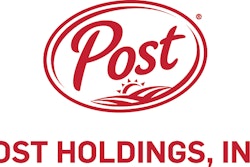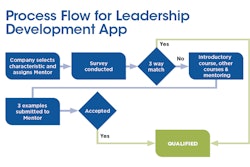Labor market expert Alex Chausovsky joins the pod for a deep dive into the complexities of the current job landscape, discussing the surprising resilience of the job market in 2023 and dispelling myths about manufacturing and job trends. Chausovsky unveils key talent attraction strategies, introducing the CLAMPS approach to cater to individual candidate priorities. In a revealing insight, Chausovsky identifies compensation levels as the primary driver of turnover, urging companies to adopt data-driven strategies. Tune in now!
To subscribe, rate, review, and find more unPACKed podcast episodes, visit pmmi.org/podcast or find us on Apple Podcasts, Spotify, iHeart Radio, or wherever you listen to your podcasts.
Sean Riley:
So with all the fancy introductions out of the way, welcome to the podcast, Alex.
Alex Chausovsky:
Thanks for having me. I appreciate it.
Sean Riley:
Pleasure is all ours. So the media can be a little bit confusing when it comes to the labor market. So I guess I'm going to start out the questions by asking how is the labor market right now?
Alex Chausovsky:
Yeah, it's remarkably resilient, I think is the best way to say it. The last month of data that we have available, which is September, showed that we added over 330,000 jobs, more than double what we were expecting to see.
Sean Riley:
Wow.
Alex Chausovsky:
And it really is a testament to how resilient the market has been really in 2023 holistically. People were expecting it to slow pretty dramatically, and there has been a little bit of that deceleration that has happened. But keep in mind that pre-pandemic a month of 200,000 jobs added was considered a banner month. And so you can see kind of relatively speaking where we are even through the fall of 2023 compared to where most people thought we were. And for me that's a great example of how the US economy has really defied expectations. And I think a large part of that is because of the strength and the resiliency of the labor market.
Sean Riley:
Interesting. So in particular for our purposes, jobs were up in manufacturing and that it doesn't run counter to, but that's despite manufacturing being a little bit lower than it has been in the last couple of years. Could you explain why the jobs are still up, but manufacturing isn't necessarily doing as great?
Alex Chausovsky:
Yeah, there's a couple of considerations that you have to weigh here. So when you say manufacturing isn't doing as great, yes, the data show that manufacturing year over year is down, but keep in mind that this is relative to a period in 2021 and 2022 when we were through the roof relative to the pre-pandemic trend. So there's going to be a very natural normalization in the data series because those levels that we saw over the last two years are really unsustainable. We just cannot keep up that level of production. We don't have the people, we don't have the machinery capacity. So manufacturing is down, but it is normalizing rather than I would say in a severe recession. Even though there is some contraction happening, it's coming off of levels that were just so elevated, that's part of the expected performance in that series. Now on the jobs front, yes, we added, I think it was more than 10,000 jobs in manufacturing in the last month, but that's still a pretty small drop in the bucket when you consider there's over 600,000 open manufacturing positions out there.
And it really goes to show how far we have to go to meet the demand for labor that exists. So I think that they're really talking about two different elements. One is talking about the supply demand in terms of the actual desire for goods and the products that manufacturing produces versus the people that are making those goods. And so they don't necessarily go hand in hand. In particular, when you look historically manufacturing peaked at around 20 million jobs back in the early 2000s, and we're somewhere in the 12, 12 and a half million manufacturing jobs now. But the volume of stuff that we're making in this country is at record high levels. And so it shows that the manufacturing industry has evolved in a major way. It doesn't take nearly as many people as when we had people standing alongside an assembly line, all working hard, physical labor. It's now much more robotics driven, much more automated. And so those two things a lot of times get confused when people listen to mainstream media and they say, if manufacturing is down, then labor should be down. That's not the case, unfortunately.
Sean Riley:
Very interesting. So that helps segue very nicely into another question I had because I know we always talk about how manufacturing has this worker crisis, there's this shortage of labor. So you discussed ways that companies can attract top talent because it's sort of flipped on its head where instead of the talent having to impress the companies, the companies have to impress the talent. So I think you mentioned four pillars, and maybe you could talk about that.
Alex Chausovsky:
Yeah. The four pillars of a talent attraction strategy include the market in which you operate. So in this case the packaging industry. The products and services which you go to market with within that sector. So what is it that you offer that's a differentiator that allows people to be successful within packaging based on the products and services that your company has? The third element is the team, and that's the one that gets overlooked the most because people are attracted to winners and we really need to highlight the achievements and the successes of the team that this individual is going to be joining in order for them to want to come and be a part of it.
And the last element being, of course, the mission of the organization that goes beyond just the bottom line. What do you do for society and for people that goes beyond making money? What philanthropic activities are you involved in? How do you give back to the community? What is it that you do that makes the world run in a better way at the end of the day? Those would be the four pillars that any company would have to highlight in an effective kind of sales and marketing pitch of why people should want to come and work for them.
Sean Riley:
And is that fourth pillar a more recent one, like a generational type thing because it doesn't seem like that would be something that I would've heard 15, 20 years ago.
Alex Chausovsky:
Yeah, I would definitely say that the millennial and Gen Z generations put a lot more weight and a lot more emphasis on philanthropic and causes that are beneficial to society in general rather than just the ones and zeros and the bottom line that used to be. The Gen Xer generation, my folks and the boomers before them, they're very much black and white, and this is much more in tune with, there are more important things that in life than just making money. And so they want to incorporate more of those things into where they work.
Sean Riley:
Interesting. Okay, another thing that you mentioned that's very important for hiring and in order to get the top talent is to employ a CLAMPS approach. I don't know if that's something that you could... I know that you were explaining how it helps with hiring, but is that something you could sort of walk us through?
Alex Chausovsky:
Yeah. So CLAMPS is an acronym. It stands for challenge, location, advancement, money, people and security. And it basically alludes to the fact that most organizations do not understand what drives the candidates to come to interview for them. And so CLAMPS is a really simple survey that companies can implement by simply asking people to rank where their priorities lie. So which one do you care about the most, which one do you care about the least, and everything in between. And by understanding that motivation for the particular candidate and then sharing those insights with the person interviewing them, it allows the company to tailor the conversation to the things that the candidate is really going to be passionate and interested in, thereby greatly increasing the chances of a positive outcome of that conversation rather than the generic, we're going to ask all the candidates the same questions and get the same answers approach.
Sean Riley:
Interesting. So a thing that you discussed that I thought was interesting that hopefully you could expand on a little bit is with the lack of available talent right now, you discussed that there's two types of candidates, an active candidate and a passive candidate, and sort of how to attract them. And I thought it was interesting, maybe you can explain it better than me even trying to touch on it much further, but of the two, the active candidate that's out there searching for a job isn't necessarily the one that you're going to look for to hire versus the passive candidate that might be open to working but isn't necessarily looking for a job. So how exactly does that work?
Alex Chausovsky:
Yeah, I would say that it's not that you don't want to hire the active candidates, but because of the labor gap that exists, meaning that there's 6 million people unemployed right now versus 9.6 million positions that are open, there's just a shortage of labor. And so looking for people that to fill your roles that are part of that actively unemployed group is not always going to give you the volume of candidates that you're hoping to attract. And so you really want to supplement the typical job posting that you would have, which would be responded to by an active talent person with something that goes after the passive candidates, which are the people that are currently employed.
They're not exactly happy with where they're at, but they're not actually taking steps to change their situation. It would require someone to engage with them, to get them to see the promise of a particular opportunity, to reach out to them, to have a conversation and say, "We really think this is the right fit for you. Why don't you apply for that?" And so it's supplementing the typical job postings that go after active talent with a pursuit of passive talent as well through either an internal recruiter or an external recruiting partner that will give you the best outcome because the data shows that it is much more efficient and effective to go after the passive candidates because those guys are really focused on this is the specific job that they're interested in.
And so the data shows that we have the propensity to hire passive candidates at a pace of every four interviews that we conduct versus every 11 interviews with active candidates. So one does not replace the other, but organizations that want to give themselves the best opportunity to bring in the talent they're looking for should adopt both approaches, both going after active candidates and passive ones as well.
Sean Riley:
And the interesting thing that you said was it's not even necessarily about going out and poaching the similar people. It's there might be people working in jobs that have attributes that can be applied-
Alex Chausovsky:
That's right.
Sean Riley:
... to different industries.
Alex Chausovsky:
Yeah, you're exactly right. So you mentioned this shortage of workers in manufacturing. The manufacturing skillset is also sought after by construction and agriculture and many other sectors of the economy. So a packaging company doesn't have to call up its competitors and try to pilfer talent away from them. They're looking for a specific set of skills in the candidate and there are other industries that employ people with those skills. So you could be looking for those passive candidates outside of packaging. Most of what candidates learn is learned on the job anyway and so that's okay to go outside of the packaging industry. So that's a way the companies can really juice the amount of people coming in interested in their open positions by looking outside of packaging.
Sean Riley:
Very interesting. And I wanted to finish with what I thought was an interesting point that you made because it's something that I don't think has been the case for a while. And it was basically what the number one predictor was of turnover. And for most people you would think this was the number one predictor of turnover, but it hadn't been the case for a while. And I was wondering if you could talk about what that number one predictor of turnover is and what should companies do with that type of information?
Alex Chausovsky:
Yeah, so if you think historically, the number one predictor of turnover pre-pandemic was the immediate manager and the relationship between the manager and the employee. And oftentimes the flaw in that was companies were not doing enough management training. So if you're good at sales, you're now all of a sudden a sales manager, if you're good at engineering you're an engineering manager, but you don't have the skills necessary to actually manage people, talk to them about mental health and DEI and their personal lives and all these things that come with management. So as a result of the pandemic and the shortage of labor that we saw in 2021 and 2022, the compensation levels have risen dramatically. And so it's been a big incentive for people to switch jobs, to leave positions that they're in and go get a different job to get more pay.
And at the peak we saw some pretty outlandish offers going out, people getting 20, 30, 50% more than they were currently making, and that's remained the number one driver. It's not as pronounced today because of a cooler economy as it was 12 or 18 months ago. It's really critical for companies to understand what is the competitive pay for any given position in their location, in their industry, and then be able to offer competitive rates both to people they're trying to attract and to keep the employees that they currently have. Because if they're not paying competitively, then they're going to be losing that talent, whether it's new candidates or existing employees. So you have to be data-driven in that approach. You have to base it on reliable information, and I'm glad to report that PMMI is bringing that data, that information to their members in the new compensation dashboard.
It's driven by a massive database that validates compensation data against about 9 million W2s every single month. So it's make sure that the data consistently moves with the marketplace and it highlights the compensation levels necessary to attract and retain people that are for the most competitive, most in need positions within the packaging industry. So we have a lot of service oriented positions, a lot of sales oriented positions, engineering positions, and you can see what the recommended rates are for your location, for your company size, for your number of employees, and it's really granular and detail oriented to give you the insights that you need to be able to have competitive compensation strategy within your company, allowing you to both attract people better and keep the people that you have.
Sean Riley:
Awesome. With that, I think we've put a button on this discussion. I want to thank you, Alex, again, for adding a little bit of extra time after your presentation to come on the pod with us so we could share this with the listeners who couldn't make it to the meeting. So thanks again, Alex.
Alex Chausovsky:
My pleasure, Sean. Thanks for having me





















